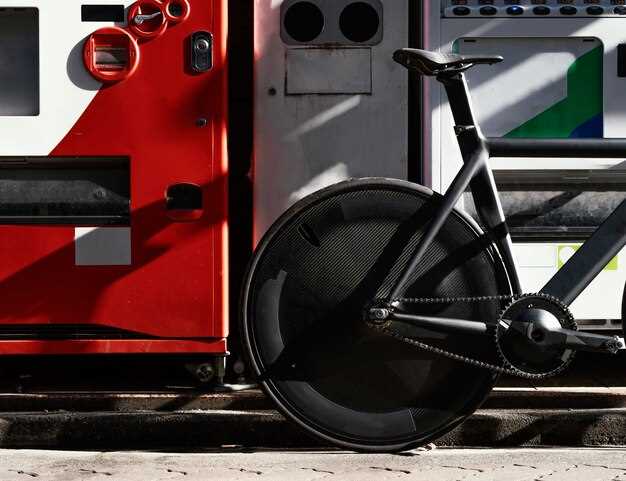
In the world of cycling, the pursuit of speed and efficiency is a constant endeavor for enthusiasts and professionals alike. High-performance bicycles, designed for competitive racing and demanding terrains, must strike a delicate balance between power and reliability. These two attributes are fundamental to optimizing performance and ensuring rider safety, making them critical considerations in the design and selection of top-tier bicycles.
Power refers not only to the bike’s ability to convert rider energy into speed but also to the bike’s capability to maintain that speed across various conditions. Components such as lightweight frames, advanced gearing systems, and aerodynamic designs play a vital role in enhancing this power output. On the other hand, reliability guarantees that the bicycle can withstand the rigors of intense rides, including rough terrains and weather challenges, without compromising performance or safety.
As technology continues to evolve, manufacturers are increasingly adopting innovative materials and engineering techniques to enhance both the power and reliability of their offerings. This article delves into the key elements contributing to these two critical factors in high-performance bicycles, examining how they shape the rider’s experience and influence competitive outcomes.
Evaluating Power Transfer: Key Factors to Consider
When assessing the power transfer efficiency of high-performance bicycles, several critical factors must be taken into account. Understanding these elements ensures optimal performance and maximizes the effectiveness of a cyclist’s effort.
1. Frame Materials: The material used in the frame significantly impacts power transfer. Materials like carbon fiber provide a balance of lightweight construction and stiffness, allowing for efficient energy transfer from the rider to the wheels. Aluminum frames, while heavier, can also offer excellent rigidity, which is essential for maximizing power output.
2. Component Quality: High-quality components such as cranksets, bottom brackets, and hubs play a pivotal role in power transfer. The integration of precision engineering in these parts reduces energy loss through flex and friction. Upgrading to higher-end components can noticeably enhance the overall efficiency of power transfer.
3. Gear Ratio: The gear ratio of a bicycle affects how effectively a rider can translate their pedaling force into speed. Selecting the appropriate gear ratio based on terrain and riding style enables cyclists to maintain optimal cadence, thereby improving overall power efficiency.
4. Wheel Dynamics: The design and construction of the wheels are vital. Aerodynamic wheels designed to minimize drag allow for better power retention. Additionally, wheel stiffness impacts how directly power is transmitted to the road, making robust wheel sets essential for competitive cycling.
5. Rider Positioning: The positioning of the rider on the bike influences aerodynamics and power application. A more aggressive riding position can help reduce air resistance, while proper fit ensures that the cyclist can exert maximum force without compromising comfort or stability.
6. Tire Performance: Tires with lower rolling resistance enhance power transfer to the ground. Selecting tires based on a balance of weight, width, and tread can significantly affect the efficiency of energy use when pedaling.
7. Pedaling Technique: Finally, the cyclist’s pedaling technique directly influences power transfer. Utilizing a smooth, circular motion rather than a choppy, inefficient action enables riders to engage more muscles effectively, optimizing the energy they produce.
By critically evaluating these factors, cyclists can make informed decisions regarding their equipment and riding style, ultimately leading to improved performance and power efficiency.
Material Choices for Enhanced Durability in Racing Bikes

The choice of materials in racing bikes plays a crucial role in determining their durability and overall performance. Manufacturers prioritize strength-to-weight ratios, corrosion resistance, and impact resilience when selecting materials for various components.
Aluminum alloys are commonly employed for their lightweight and robust characteristics. Modern aluminum frames utilize advanced heat treatment processes, enhancing strength while keeping weight low. These properties make aluminum a popular choice among competitive cyclists, albeit with a trade-off in ride comfort compared to other materials.
Carbon fiber has gained immense popularity due to its exceptional stiffness and low weight. Its ability to be molded into complex shapes allows for optimized aerodynamics and performance. However, carbon fiber is susceptible to impact damage, which necessitates careful handling and maintenance to preserve its integrity over time.
Steel remains a dependable option for some racing applications, offering a balance of weight, strength, and shock absorption. High-tensile and chromoly steels are favored for their durability and fatigue resistance, reinforcing the bike’s longevity. While heavier than aluminum and carbon fiber, the comfort and reliability of steel often appeal to long-distance racers.
Titanium is another material known for its remarkable durability and resistance to corrosion. Although generally more expensive, titanium’s longevity and ability to withstand harsh conditions make it an ideal choice for high-performance frames that aim to last for years. Its natural elasticity also provides a smooth ride, further enhancing the cycling experience.
Additionally, composites that combine materials, such as aluminum-carbon hybrids, are increasingly being explored. These designs leverage the benefits of each material, aiming to maximize performance attributes while minimizing weaknesses. Such innovations are paving the way for the next generation of durable racing bikes.
The selection of materials in racing bikes is critical for the triad of performance, longevity, and safety. As technology advances, the industry continues to experiment with and refine material choices to meet the demanding needs of race enthusiasts, ensuring that durability remains at the forefront of bicycle design.
Maintenance Practices That Ensure Long-Lasting Performance

Regular maintenance is essential for high-performance bicycles to ensure optimal reliability and longevity. One key practice is routine cleaning, where the entire bike, especially the drivetrain, should be cleaned to remove dirt and grime that can lead to wear over time. Using a mild soap and water solution, followed by thorough drying, prevents rust and corrosion.
Lubrication of moving parts is another critical maintenance task. Chain lubrication should be performed frequently, using a quality bike-specific lubricant to minimize friction and wear. Ensure that the excess lubricant is wiped off to prevent accumulation of dirt. Additionally, pivot points on brakes and derailleurs should be lubricated to maintain smooth operation.
Tire maintenance should not be overlooked. Regularly checking tire pressure ensures optimal rolling resistance and traction. Inspect tires for uneven wear or damage, and replace them as needed to avoid blowouts during rides. Rotating tires can also help in even wear.
Brake systems require periodic inspection as well. Check brake pads for wear and replace them when they reach the wear indicators. Adjust brake tension to ensure responsive braking performance, as both front and rear brakes are crucial for safety.
Regularly inspecting the frame and components for signs of stress or damage is vital. Look for cracks or wear in the frame, fork, and other critical areas. Tightening bolts and checking component alignment can prevent issues that may arise during rigorous riding.
Finally, performing periodic professional tune-ups can greatly enhance the long-term performance of a high-performance bicycle. A trained technician can identify potential issues and conduct a thorough check-up that includes adjusting gears, trueing wheels, and ensuring overall safety. This comprehensive approach to maintenance ensures that the bicycle remains in peak condition for years to come.